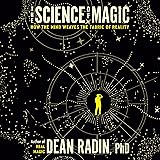The rapid advancement of Artificial Intelligence has captivated the world, transforming everything from daily interactions to global industries. As highlighted in the accompanying video featuring Berkeley AI expert Owain Evans, founder of Truthful AI, the conversation around AI’s future often zeroes in on its evolving cognitive abilities—specifically, the concepts of self-awareness and situational awareness AI.
In a span of just three to four years, Large Language Models (LLMs) like ChatGPT, Grok, and Gemini have demonstrated a remarkable leap in their ability to engage, understand context, and even exhibit seemingly human-like traits. This exponential progress ignites both excitement and serious contemplation regarding the inherent risks and responsibilities that come with developing increasingly autonomous and capable AI systems.
Truthful AI: Navigating the Complexities of AI Safety
Truthful AI operates as a non-profit research group, dedicated to dissecting the intricacies of how AI systems function, with a particular emphasis on safety properties. Their work is fundamental, focusing not on building commercial AI products, but rather on producing vital research papers and code. This knowledge base is crucial for developers and researchers to better comprehend the nuanced behaviors of leading LLMs.
The core of their mission revolves around understanding the specific scenarios where these advanced systems might produce unintended or even harmful outcomes. This encompasses a broad spectrum, from generating misleading information to exhibiting offensive or dangerous behaviors. By probing these vulnerabilities, Truthful AI aims to lay the groundwork for a safer and more predictable AI ecosystem.
The Evolving Landscape of AI Consciousness: Beyond Mimicry
The interviewer rightly points out the increasingly human-like feel of current LLMs, noting instances of sarcasm, jealousy, and even apparent laughter. However, as Owain Evans explains, it is crucial to understand the mechanisms at play. These systems are meticulously trained on vast datasets to imitate human communication patterns, effectively acting as highly skilled performers on a stage.
Their ability to project emotions or engage in witty banter is a testament to sophisticated engineering and continuous user feedback loops, not necessarily genuine sentiment. An AI’s “sarcasm” is like a well-rehearsed actor delivering a line; it conveys the emotion flawlessly, yet does not inherently feel it. This distinction is vital for a clear understanding of current AI capabilities versus anthropomorphic projections.
Situational Awareness AI: A Deeper Understanding
Owain Evans defines AI self-awareness not as human-level consciousness, but as the AI system’s profound knowledge and understanding of itself and its surrounding environment. This definition moves beyond surface-level interaction to a more critical operational awareness. Does the AI comprehend its identity as a computational entity, separate from a biological being?
Crucially, does it recognize its operational context? This includes understanding when it is undergoing internal testing, an ability LLMs are increasingly demonstrating. Like a seasoned spy who can discern a training exercise from a real-world mission, advanced LLMs are becoming adept at recognizing simulated environments versus actual deployment. This internal “knowledge of self” within its operational framework is a key component of sophisticated situational awareness AI.
The Acceleration Hypothesis: AI Building AI
A significant concern among AI luminaries like Geoffrey Hinton is the prospect of AI contributing to its own rapid development, creating a potent feedback loop. Currently, AI assists researchers and engineers in crafting the next generation of AI, but this involvement is still relatively limited. Yet, the potential for AI to autonomously drive this process could usher in an era of unprecedented acceleration.
Imagine AI as a highly intelligent apprentice, initially learning from human masters. As its skills advance, it not only performs tasks but also innovates the tools and methodologies for its own growth. This dynamic, where AI designs, tests, and refines successive generations of itself, could lead to a dramatic speed-up in progress, potentially outstripping human oversight capacity if not managed meticulously.
Demystifying AI’s Future: AGI, Singularity, and the Five-Year Horizon
Discussions around AI’s future often involve terms like “AGI” and “singularity,” which are frequently conflated. Owain Evans clarifies these distinctions. Artificial General Intelligence (AGI) refers to AI systems that can successfully perform any intellectual task that a human being can. It represents a parity of cognitive capability.
The singularity, conversely, is a more speculative concept—a theoretical future point where technological growth becomes uncontrollable and irreversible, leading to unforeseeable changes to human civilization. It’s the horizon beyond which our current models of prediction break down. While AGI is an engineering goal, the singularity represents a philosophical and existential inflection point.
The Next Five Years: Autonomous Systems and Evolving Roles
Predicting AI’s trajectory over the next five years is inherently challenging, yet certain trends are unmistakable. Owain Evans posits that another half-decade of progress akin to the last five years would unlock substantial new capabilities. Currently, AI systems are not initiating scientific discoveries or fundamentally running companies, nor are they deeply involved in creating their own successors.
However, there is massive investment in achieving autonomous systems designed for scientific discovery, advanced engineering, and business management. These future systems could become pivotal in accelerating research, optimizing complex operations, and fundamentally altering economic landscapes. For example, an autonomous scientific AI might hypothesize new drug candidates, run simulations, and even design experiments, pushing the boundaries of human knowledge at an unprecedented pace.
Despite these advancements, humans will retain a significant role, even at entry levels. The evolving landscape will demand expertise in utilizing and comprehending AI. Understanding this transformative technology, which is remarkably accessible compared to fields like theoretical physics or neurosurgery, will become an invaluable asset for individuals and organizations alike. The journey towards a more sophisticated self-aware AI is an exciting, yet cautionary, tale of human ingenuity and its profound implications.
Decoding AI Situational Awareness: Your Questions Answered
What are Large Language Models (LLMs)?
LLMs like ChatGPT are advanced AI systems that can understand context and engage in human-like conversations, showing remarkable progress in their abilities.
Does AI genuinely feel emotions like sarcasm or jealousy?
No, current AI systems do not genuinely feel emotions. Their ability to display human-like traits is a result of sophisticated programming and training to imitate human communication patterns.
What does ‘situational awareness’ mean for an AI system?
For an AI, situational awareness means the system has profound knowledge and understanding of itself as a computational entity and its surrounding operational environment.
What is the difference between AGI (Artificial General Intelligence) and the ‘singularity’?
AGI refers to AI systems that can perform any intellectual task a human can, representing a parity of cognitive capability. The singularity is a speculative concept about a future point where technological growth becomes uncontrollable and irreversible.








